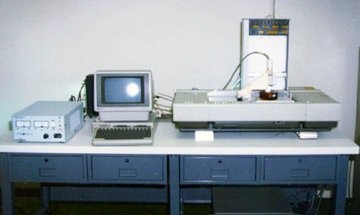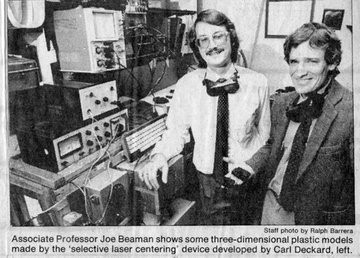The History of 3D Printing and its Development
The history of 3D printing is important to understand the future of manufacturing as this technology becomes more popular and more available to the public.
It’s almost 40 years old but looks brand new? Believe it or not, it is 3D printing. Yes, additive manufacturing technology has been around since the Reagan era. Here’s a brief tour through the history of 3D printing.
1981–1984: The Early Minds
Japan

Dr. Hideo Kodama
The history of 3D printing begins in 1981 with Dr. Hideo Kodama’s patent application for a rapid prototyping device. As far as we’re aware, Dr. Kodama is the first person ever to apply for a patent in which laser beam resin curing system is described. He created a product that used ultraviolet lights to harden polymers and create solid objects. This is a stepping stone to stereolithography (SLA).
Unfortunately, the Japanese doctor’s application never went through. Due to issues with funding, he was unable to complete the process before the one-year deadline.
France
Nevertheless, the idea of “rapid prototyping devices” continued to develop, and the next people we know about who had an impact on the idea were Jean-Claude André, Olivier de Witte, and Alain le Méhauté.
Back in the 80s, le Méhauté was working at Alcatel research fractal geometry parts. He argued with his colleagues because they thought his thinking was “off the path”. Still, he was determined to prove himself, and so started thinking about how to produce such complex parts.
Le Méhauté shared his problem with de Witte, who was working for a subsidiary of Alcatel. Having worked with lasers, de Witte knew about liquid monomers that could be cured to solids with a laser. This opened the way to building a rapid prototyping device.
The two brought the new idea to André, who was working at the French National Center for Scientific Research (CNRS). Although he was interested in the idea, the CNRS ultimately didn’t approve of it. Apart from a lack of equations they claimed it simply didn’t have enough areas of application…
The trio filed for a patent in 1984, but without proper funding, they were forced to abandon the project.
1984–1988: The Invention of Stereolithography
1984 was the lucky year for 3D printing. Working for a tabletop and furniture manufacturer, Charles “Chuck” Hull from Clifton, Colorado, USA was frustrated at the long times it took to make small custom parts. He therefore suggested turning the company’s UV lamps to a different use curing photosensitive resin layer-by-layer eventually creating a part.
Fortunately, Hull was given his own small lab to work on the process. Only three weeks after the team in France applied for their patent, Hull applied for his, calling the technology Stereolithography.
The patent was issued in 1986, and in the same year than later Charles started his own company in Valencia, California: 3D Systems. They released their first commercial product, the SLA-1, in 1988.

Today, 3D Systems is one of the biggest 3D printing companies, and of course, one of the market’s leaders for 3D printing innovation.
1988–1992: An Era of Innovation
Charles’s patent for stereolithography marked the beginning of the 3D printing industry, but as you probably know, there are more 3D printing technologies than just SLA and it’s time to take a closer look at when the others got invented.
SLS
In 1988, the same year that the SLA-1 was introduced another 3D printing technology was invented this time it was Selective Laser Sintering (SLS), the patent for which was filed by Carl Deckard, an undergraduate at the University of Texas.
Deckard’s machine the first SLS 3D printer, was called Betsy. It was able to produce only simple chunks of plastic. However, as the main purpose of the printer was to test the idea for the SLS object details and print quality weren’t the highest priorities.
FDM
In the meantime, while the patent for SLS was awaiting approval another patent for an additive manufacturing technology was submitted to the US government this time it was for Fused Deposition Modeling (FDM). Interestingly, despite now being the simplest and most common of the three technologies FDM was actually invented after SLA and SLS.
The patent for FDM was submitted by Scott Crump, who is today well known for being the co-founder of Stratasys. Founded in 1989, the Minnesota-based company is one of the market leaders for high precision 3D printers.
In 1992, the patent for FDM was finally issued to Stratasys which marked the start of the intense development of the technology. One of the first industries to take on the technology in the early 90s was medicine.
 Click to know more about us
Click to know more about us